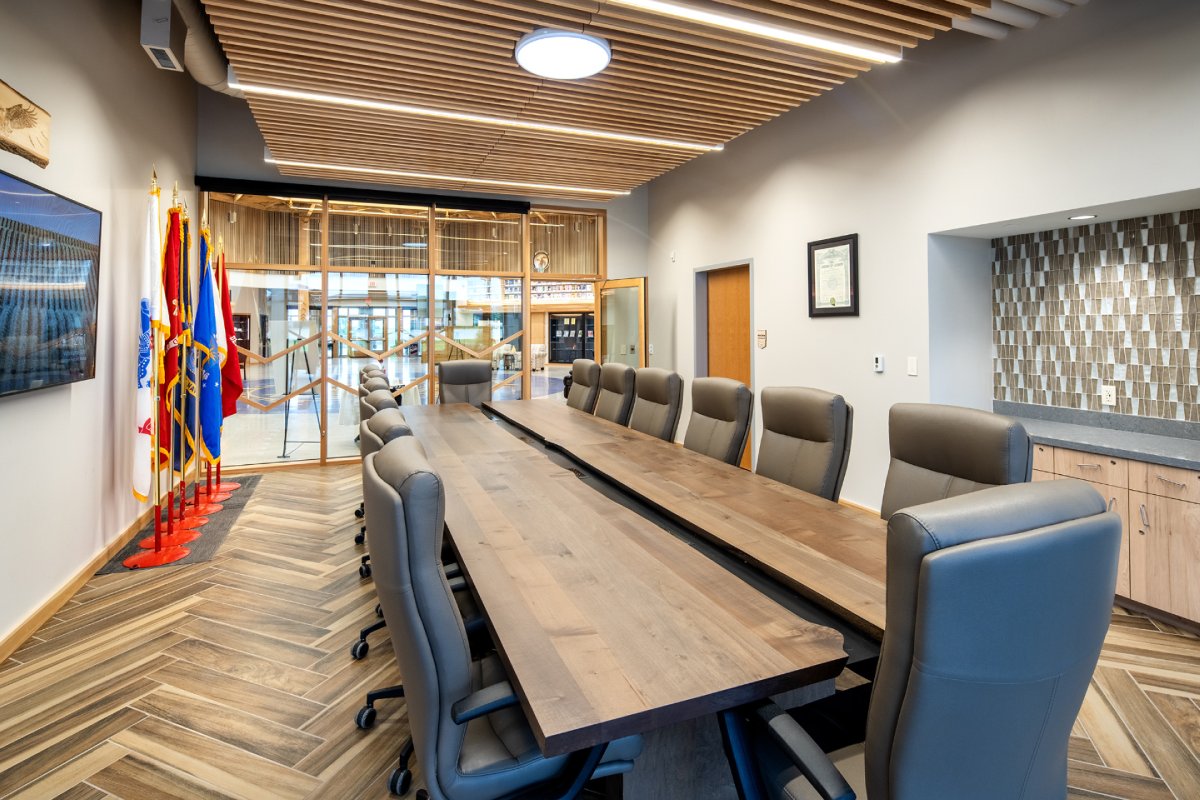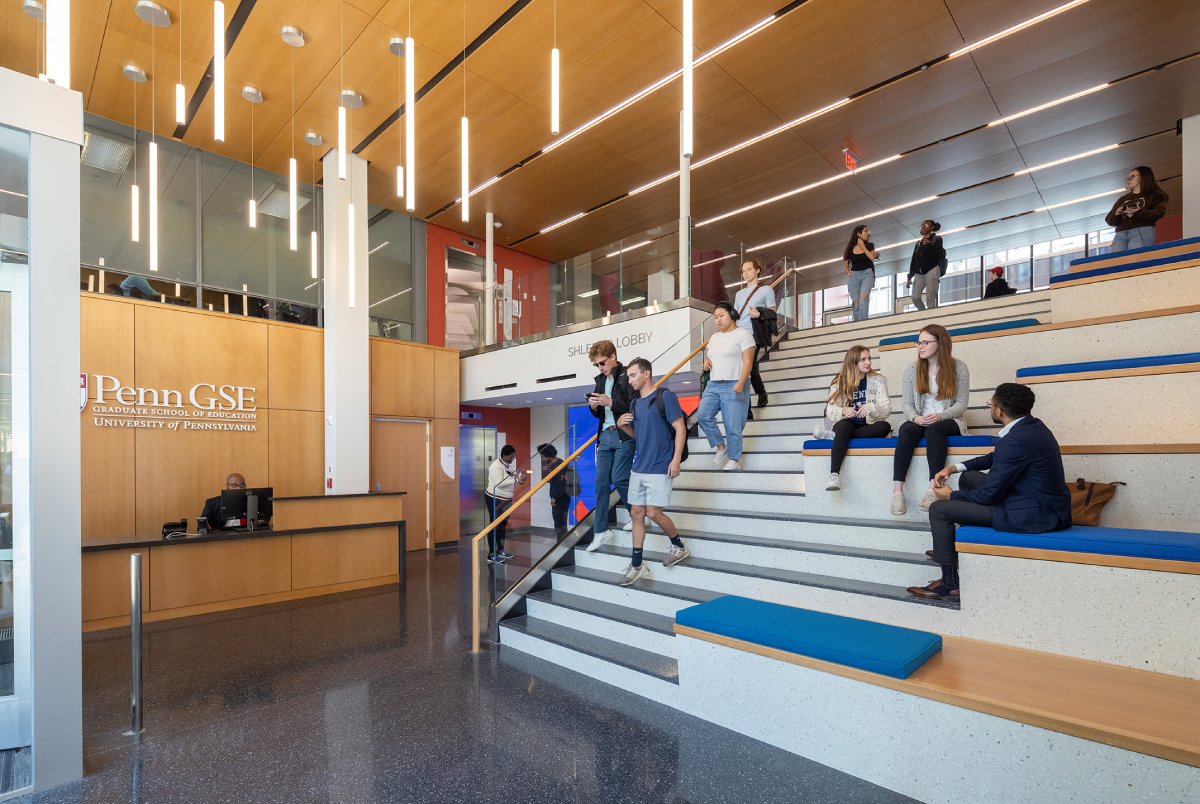
Architects are not just designers of spaces—they are influencers of the human experience. Every material choice, structural decision, and acoustic element plays a role in shaping how people interact, work, and feel within an environment. In our modern built environment, there’s a growing awareness of the connection between architecture and acoustic wellbeing.
Soundscaping, or the intentional design or manipulation of the acoustic environment to create a desired atmosphere, mood, or experience, is at the heart of this approach. Soundscaping goes beyond noise control–it’s about creating auditory environments that support concentration in workspaces, tranquility in healing spaces, and connection in communal areas. Through a thoughtful integration of advanced acoustic solutions, architects can seamlessly integrate form and function, transforming sound into a tool that enhances lives rather than causing stress, distraction, or diminishing the quality of a space.
The team here at ASI Architectural provides solutions that allow architects to create not only visually compelling spaces but also ones that enhance wellbeing, inclusivity, and social harmony through thoughtful acoustic design. Here’s why that matters.
The Hidden Influence of Sound in Our Daily Lives
An overabundance of unwanted sound can significantly affect our moods, decrease productivity, and negatively impact our health. Increasingly, research and real-world experience highlight how sound affects productivity in workplaces, where constant noise and poor acoustics can disrupt focus and reduce efficiency. Poor acoustic environments are often plagued by unwanted noise, which can increase stress levels that lead to fatigue, problems with concentration, and the possibility of long-term health issues like elevated blood pressure, disrupted sleep patterns, and even hearing loss.
Thoughtful acoustic design is essential in mitigating these effects–creating environments that support mental clarity, comfort, and overall wellbeing. This is where architects play an important role. With their ability to shape not just the look and function of a space but also the way it sounds, architects have the power to design environments that promote positive experiences. By incorporating thoughtful acoustic solutions, they can transform spaces into environments that foster clarity, comfort, and connection.
Acoustic Design as a Tool for Social Well-Being
As we touched on earlier, poor acoustics contribute to stress, reduced productivity, and even physical health issues such as high blood pressure and sleep disturbances. Sound is more than background noise–it’s a constant presence that influences how we feel, think, and interact with a space. When we design for wellbeing, we move beyond form and function to create spaces that actively support the physical, emotional, and cognitive health of those who use them.
Architects designing hospitals, schools, and offices have the power to improve mental health by incorporating our wood ceiling and wall panels. These products contribute to effective noise reduction in buildings, helping absorb excess noise and create environments that support concentration, relaxation, and social interaction. By reducing reverberation and controlling noise levels, these acoustical surfaces and products contribute to calmer, more focused atmospheres where patients can heal, students can learn, and employees can thrive.
Across a range of sectors, from education to healthcare, architects are already leveraging acoustic products to enhance social well-being. Let’s look at two case studies that illustrate the ways these new best practices for acoustic design in public spaces can enhance the wellbeing of our communities at large.
Piedmont Atlanta Hospital – Marcus Tower
At Piedmont Atlanta Hospital, the design of Marcus Tower incorporated acoustic materials to create a healing environment. The design team utilized acoustical panels to reduce noise levels and improve speech intelligibility. This approach not only addressed the hospital’s acoustic needs but also contributed to a calming and comfortable atmosphere for patients and staff.
COPaG High School – Prague, Czech Republic
COPaG High School in Prague serves as a model for sustainable school design, integrating absorptive surfaces to improve environmental comfort. The school features acoustic ceiling tiles and wall panels throughout its classrooms and common areas. In the entrance hall and adjacent canteen, an innovative multi-layered “forest” of acoustic panels was installed to enhance speech intelligibility and meet their acoustic needs, contributing to a pleasant and effective learning environment.
Architects as Social Innovators: Designing for Inclusion
The way sound interacts with a space can significantly affect neurodivergent individuals, including those with autism and sensory processing disorders, as well as children and the elderly. For example, spaces with excessive reverberation, unpredictable noises, or constant background chatter can overwhelm the senses, leading to anxiety, confusion, and disengagement. Children may struggle to communicate effectively in noisy classrooms, while older adults with hearing loss can find it difficult to distinguish speech from background noises, potentially leading to feelings of isolation. For neurodivergent individuals, these environments can trigger sensory overload, making even simple, routine interactions challenging.
There is a concept known as hostile architecture, which refers to built environment features that are intended to control or restrict certain behaviors. One prominent example is the use of armrests in the middle of park benches to limit homeless people’s ability to use these benches as places to sleep. Just as physical barriers and uncomfortable seating can serve as examples of hostile architecture–intentionally or unintentionally excluding certain groups–poor acoustical environments can also act as auditory barriers. Harsh, noisy, or overstimulating spaces can effectively discourage people with sensory sensitivities from participating fully in public life, contributing to a broader sense of exclusion.
Architects have the ability to design spaces that promote accessibility by controlling noise levels and reducing harsh reverberation. By considering inclusive architectural design, architects can champion social equity and ensure that every individual, regardless of their sensory sensitivities, feels safe and welcome in public spaces. A couple of products that combine form and function to create more inclusive spaces include:
Perforated Wood Panels and Slatted Wood Wall Systems
Our perforated wood panels (Audition, Fusion and Microperf) and slatted wood wall systems (Linear and Grille) can be incorporated into schools, community centers, and transportation hubs to create calmer, more sensory-friendly design. These beautiful and high performing products not only absorb excess noise but also add warmth and visual interest to the space, allowing designers to blend acoustic performance and aesthetic appeal.
Grille Systems
Our Grille system is ideal for public spaces such as libraries, airports, and auditoriums where controlling ambient noise is crucial. By improving speech intelligibility and reducing background noise, this system creates more comfortable and inclusive environments, facilitating better social interaction and accessibility.

The Future of Acoustical Design in Architecture
As we move forward into the post-Artificial Intelligence era, AI and emerging technologies are revolutionizing the field of acoustic planning. One of the most promising applications lies in mitigating the impact of sound on mental health in urban areas, where urban sound design is becoming a key strategy for reshaping the auditory experience of city life.
Architects and designers are now leveraging AI-powered modeling tools to simulate and optimize landscapes before a building is even constructed. These advancements not only help in reducing harmful noise pollution but also in creating environments that promote wellbeing, focus, and tranquility.
From adaptive soundscaping systems that respond to real-time environmental inputs, to AI-driven material selection for optimal acoustic insulation, the future of architectural acoustics is deeply intertwined with intelligent design. This shift redefines how we experience sound in our daily lives, transforming chaotic noise into curated auditory environments that support health and productivity.
Designing Spaces That Feel as Good as They Look
The importance of sound in architectural design cannot be overstated. There is a proven correlation between noise pollution and mental health, with excessive or poorly managed noise contributing to increased stress, anxiety, and even cognitive fatigue. As a result, acoustics are no longer an afterthought, they are a central component of designing sound-conscious spaces that enhance comfort, promote mental clarity, and support overall wellbeing for all occupants.
Architects are uniquely positioned to shape environments that not only meet aesthetic and functional goals but also actively support human health. By prioritizing acoustic wellbeing in every phase of design, from concept to material selection, they can create spaces that are truly holistic in their impact. Integrating acoustic strategies for sustainable architecture means considering how sound interacts with energy efficiency, material performance, and occupant wellness. Whether designing a school, healthcare facility, workplace, or residential development, architects should view acoustics as a key element of sustainable, human-centered architecture that contributes to long-term comfort, productivity, and social harmony.
If you’re ready to explore how sound can elevate the spaces you design, reach out to one of our team members or our rep network for a consultation. Our innovative acoustic treatment options and soundscaping solutions can help you create environments that not only look great, but sound great too, ensuring a positive impact on the wellbeing of every occupant.





